[Part Two of “What Makes a Scholar’s Pull-List?”]
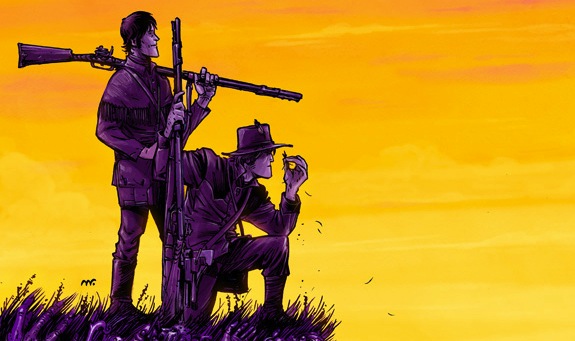
American historians sometimes call the waves of religious fervor in the 18th and 19th century our country’s “Great Awakening.” It is a powerful image–convinced that God’s spirit was calling Christians to renew their commitments–Americans flocked to open-air revivals to hear fiery sermons by orators like George Whitefield. Among the innovations of this era was what would become evangelicalism, that variety of Christianity that emphasized the individual, emotional “born again” experience of admitting one’s sinful nature and accepting Jesus’ offer of redemption.
Why this historical introduction? I have tried to consider various explanations for how my assortment of monthly comics came to be. Are my subscriptions simply the products of obscure personal quirks? Am I distracted by certain styles of art or attracted to certain writers? No matter how I tried to explain why I had certain comics on my list to be set aside monthly when they arrive, I found that the list defied me.
As I begun to consider why the comics that caught my attention did so, I came to see the collection not as a discrete group but as indications of the wider personality of comics today. The change of the Great Awakenings is a helpful analogy because it captures two kinds of shifts that my selections reflect. First, increasing diversity of stories beyond the superhero, especially in the proliferation of author-owned titles through Image. Authority has been lifted from DC and Marvel and begun a migration to individual authors. Certainly the rise of internet comics has helped, but more than anything else (to judge from the publishers of items on my eclectic pull-list) it seems that Image Comics is fueling this revival.
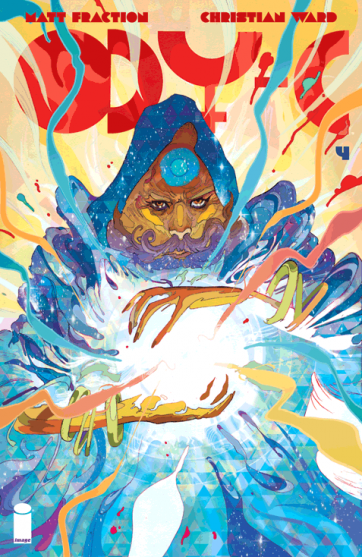
Second, because authors are free of many of the yokes of superhero narratives and the editorial process of working with DC/Marvel and its legacy characters, we are seeing a much wider array of personal encounters with religious themes. Religion is no longer mere back-story. It can be the heart of the drama itself. It can hold its own amid narratives of war, politics, love, or super-villain plot to destroy the world. It is no longer the case that a text is exceptional when it dwells primarily or exclusively on religion (as in say R. Crumb’s The Book of Genesis). We are instead at the stage where we have the opportunity to choose comic “a” over comic “b” because it deals with religious material in a more serious way. (See our previous discussion of Habibi on Twitter as one example of how these choices reverberate into the classroom.)
If we now have more authors writing more diverse kinds of stories, then it seems inevitable for us to have come to the point where religion is getting taking seriously. Readers and writers alike are showing that serious topics sell–religion included.
Diversity Beyond Capes and Mutations
The single largest area of my pull-list contains items from Image Comics. Image is different than Marvel or DC in that its creators retain the copyright on their creations. The diversity of Image’s current line-up is a testament to the success of its model in the last decade. Among the superior items they are presently publishing are:
- Bitch Planet by Kelly Sue DeConnick and Valentine De Landro (2014–)
- Descender by Jeff Lemire and Dustin Nguyen (2015–)
- East of West by Jonathan Hickman and Nick Dragotta (2013–)
- Low by Rick Remender and Greg Tocchini (2014–)
- Manifest Destiny by Chris Dingess and Matthew Roberts (2013–)
- Ody-C by Matt Fraction and Christian Ward (2014–)
- The Wicked + The Divine by Kieron Gillen, Jamie McKelvie and Matt Wilson (2014–)
- Wayward by Jim Zub, Steve Cummings et al.
- Wytches by Scott Snyder and Jock (2014–)
These items are all must-haves when I enter the store. Some are explicitly religious items (Wytches is a re-imagining of witches as monsters in league with a cult of humans and East of West is a version of the Book of Revelation in a alternate, future Earth.) Others are brimming ethical landscapes that ask big questions about the nature of life (Descender on AI and robotics; Low on cultural values amid ecological collapse; and Bitch Planet on resistance, conformity, and identity).
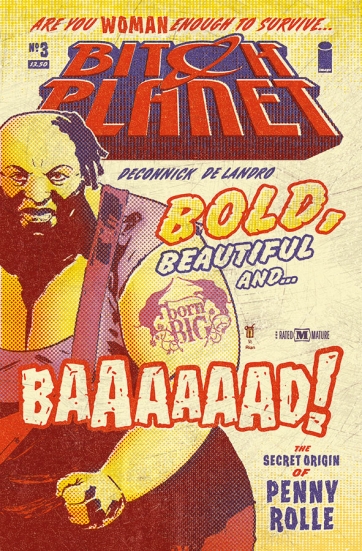
Unlike the comics of the past from Marvel or DC, the discussion of these issues need not take place primarily or exclusively in worlds where super-powers solve crises deus ex machina. This is not to say that newer publications have escaped the tropes of science fiction, fantasy, or even the superhero genre. Instead, we are seeing what used to be the secondary market of graphic novel production as essential mainstream reading. Once these items may have been exceptional. Now they fill half the shelves at my local shop. The diversity of the stories reflect the growing diversity of comic readers. The creators often say “I am making the comics I want to see as a reader.” Even the heart of this movement may still lie within the big two. At least there is no escaping the influence of Ms. Marvel as written by G. Willow Wilson or the total overhaul of the DC’s New 24. Diversity is the watchword for the comics market today.
Where the new-found openness has led readers is to a revival of themes that deal with the elements of life that were often diminished in superhero narratives. Even very recent explorations of the religious identities of superheroes–say the introduction of Simon Baz as a Muslim Green Lantern in Geoff Johns’ 2011 reboot of the franchise–have routinely failed to do more than use religious identity as a framing device that is discarded the moment it cannot be easily be aligned with super-power plot lines.
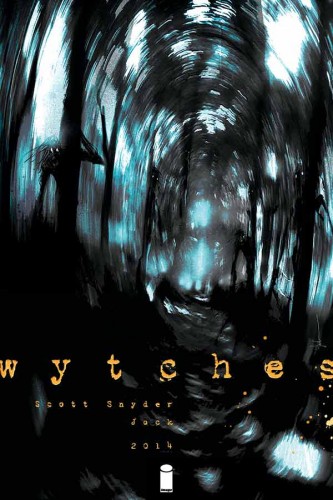
The limits of western superhero narratives–the good and evil must battle for the sake of the earth or universe–makes it challenging to deal more straightforwardly with elements of religious life. New title lines from Image have given authors the power to explore these items and compete with the mainstream superheros.
Beyond Image Comics I must confess an abiding fascination with the universe created by Mike Mignola. Hellboy and its many spin-offs deal more centrally with myth than any other series on the market today. They are smart fusions of folk literature, superstition, myth, religion, and fantasy. This mix ensures a never-ending supply of creative material that I’ve written about elsewhere as a solid benchmark of the casual increase in supernaturalism of today’s popular culture. Hellboy is mostly superhero, but the framework of the good-evil battle is entirely religious. Where science or science fiction so often plays that role in older superhero narratives, Hellboy remains comfortable drawing on spiritual wellsprings as the source of its youth.
This, I believe, is the final answer for many comic creators today. The spiritual wellspring of stories is no longer hidden. It need not be thinly veiled or spoken of in hushed tones. Comics today can be explicitly religious, even blasphemous and sell alongside Superman, Batman, and Spiderman. There’s really few other ways to account for the success of something so scandalous as Joshua Hale Fiaklov’s The Life After or the fascination with religious cults that occupy Revival, Sons of the Devil and Nameless to offer just three from my reading list.
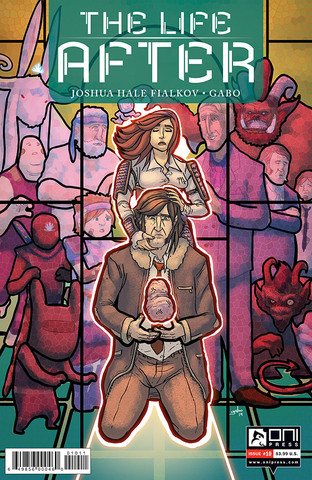
If this is the just the beginning of the great awakening of religious themes in comics, it has been a long time coming. Though there are many bright spots for scholars of religion and/in comics from the last century, the pace of worthy publications today outstrips my time and finances. My eclectic religious groove is right at that border where authors write about worlds where characters accept the supernatural as easily as they once did superhero powers. That’s not a genre, nor does it come close to helping explain my bloated pull-list (20+ titles and counting). It does, however, suggest that there are enough authors dealing with this routinely enough that I can subtract them out of the larger body and easily point you in their direction. Want to buy into that? Try these:
- East of West: Calling this a rollicking Revelation inspired apocalyptic science fiction drama hardly seems fair. East of West is Jonathan Hickman and Nick Dragotta’s futuristic clash of empires on the burned-out landscape of Americas that never were. Unlike Low’s dripping pastels, East of West is crisp in a way that betray the depths of its religio-political intrigue. Here the empires are refusing to go quietly into the night. As they cough and sputter their way toward the Apocalypse, readers get to root not for a hero but the least despicable villain.
- Manifest Destiny: What if when Lewis & Clark went West they found portals to other dimensions leeching monsters into our world? This gritty, dark historical fantasy by Chris Dingess, Matthew Roberts, and Owen Gieni is filled with horrors that would delight H.P. Lovecraft and his comic-successors like Mike Mignola (of Hellboy fame). Re-configuring the contact zone of European and Native to include a parade of lethal horribles makes European expansionists far more susceptible to the parade of horrors they inflicted on indigenous peoples.
- The Wicked + The Divine: The light that burns twice as bright lasts half as long, right? What if the Gods returned again and again every 90 years only to burn out just two years later? This comic took the community by storm this past year, winning many awards as best-of-the-year. The sensational art by Jamie McKelvie (with colors by Matthew Wilson)–with the pop sensibility of Andy Warhol mixed with superhero-infused stylings and dance-club lighting–is paired with an utterly entrancing story by Kieron Gillen. It was hard not to fall in love with this work. It’s smart, funny, and it’s “what-if” premise sets my religious sensibilities ablaze with the possibilities of a recurrent religious revivalism on a 90 year clock with not-so-immortal immortal deities.
- Wayward: Japan has never been shy about its relationship with the spirits. Introducing this world to western audiences, Jim Zub attacks the old myths with new ones. With a short academic essay at the end of each issue to guide readers through the mythical landscape of Japanese folk-lore, Wayward caught my attention because it plainly accepts what many folks around the world think about how things work: the supernatural exists side-by-side with us. Most of the time that’s okay, but when things go wrong, watch out.